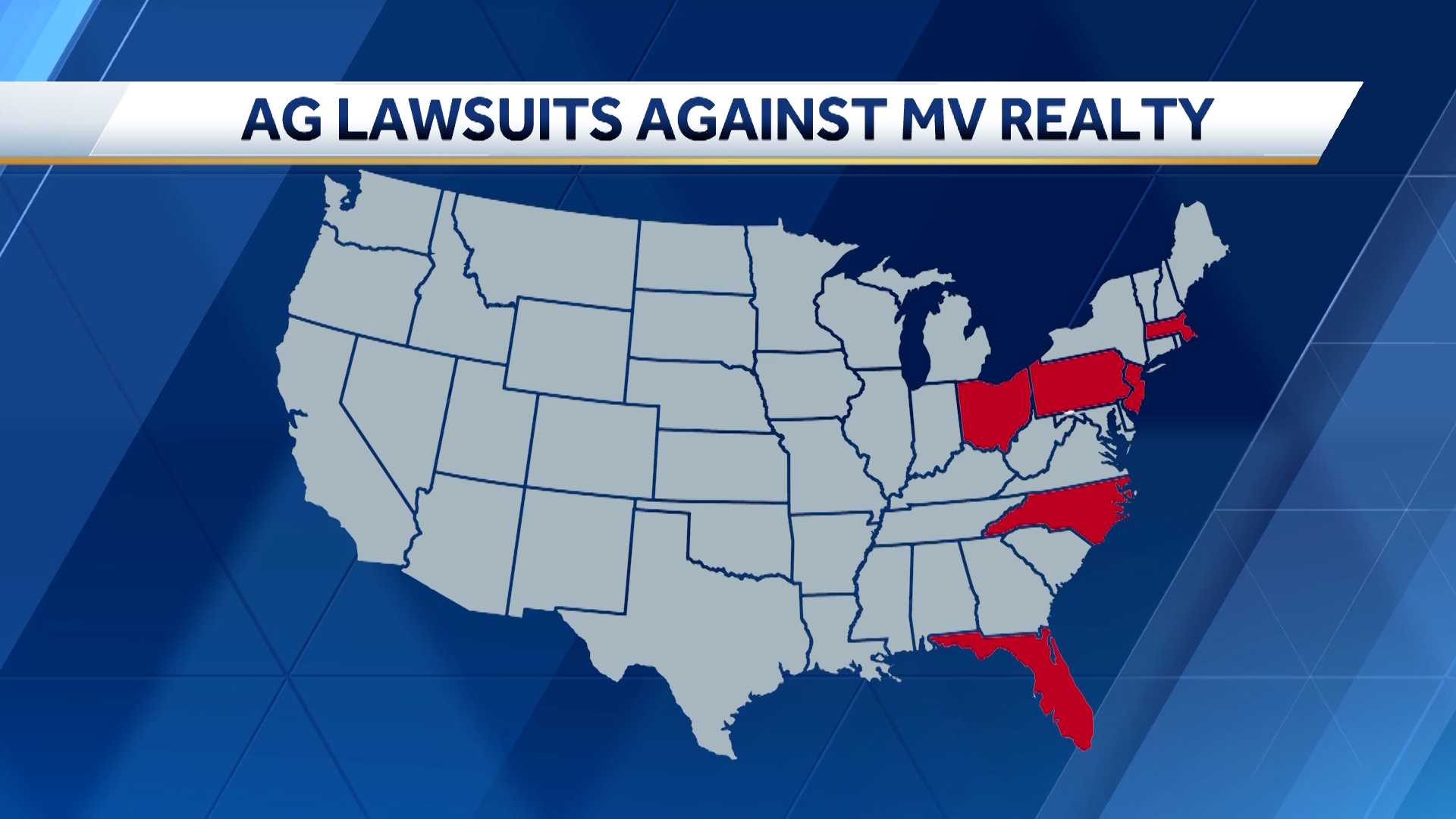Breaking - NAR Lawsuit - Fannie Mae Update In the dynamic world of…
Assuming a VA Home Loan
Assuming a VA Home Loan

Let’s break it down.
Assuming a VA loan may seem like a maze of regulations and procedures, yet it’s a pathway forged with clear, accessible signposts when you know where to look.
Understanding VA Loan Assumption
Embarking on a VA loan assumption means stepping into an existing mortgage with its terms intact, an option imbued with particular advantages. Precisely, this process permits a qualified individual to assume the loan responsibilities, including the interest rate and remaining balance, of a veteran’s VA loan without the need to secure a new loan from scratch.
To effectively navigate the waters of a VA loan assumption, one must grasp the essence of a “creditworthiness review”. It’s essential to recognize that while the VA loan is assumable, the assumer must be deemed eligible by the lender. The lender’s thorough evaluation ensures that the new borrower is financially stable and capable of taking on the existing loan obligations. This is crucial for the original borrower, as their VA loan entitlement remains tied to the property until the loan is either paid off or assumed by a qualified borrower.
Benefits of Assuming a VA Loan
Assuming a VA loan provides a unique opportunity to benefit from terms negotiated by the original borrower, potentially under more favorable conditions than current market rates. Additionally, this process can result in significant cost savings, as some of the typical loan origination fees may be bypassed.
Moreover, the ability to assume a VA loan is not restricted to military personnel only, which expands the pool of potential buyers considerably. The assumable nature of these loans can make the property more attractive in varying economic climates, offering a leverage point for sellers and options for buyers.
Assumable VA loans maintain the original interest rates, shielding borrowers from market fluctuations.
When considering the financial implications, it’s important to note that assuming a VA loan may also release the original borrower’s entitlement. This restoration of entitlement enables the veteran to reuse their VA loan benefits for future purchases, all while providing a smooth transition of property ownership without the need for a new mortgage.
Eligibility Criteria for Assumption
Not all potential homebuyers will meet the requirements to assume a VA loan.
Since 1988, VA loan assumption policies mandate that the assuming party must meet all VA loan eligibility requirements themselves. It’s not sufficient that the original borrower was eligible; the new borrower must also qualify.
Moreover, assumptions can’t proceed without the lender’s approval. Credit history, income, and other financial factors will be thoroughly evaluated to determine the assumer’s capability to take over the loan.
In addition to lender scrutiny, the VA must approve the assumption as well. This double layer of approval helps ensure the integrity of the VA loan program and the security of the initial investment.
Remember, assuming a VA loan requires an assumption fee, typically 0.5% of the loan balance, paid by the new borrower to process the transaction.
The Assumption Process Step by Step
Taking on a VA loan via assumption begins with a thorough evaluation of eligibility. Prospective assumers must demonstrate that they meet the VA’s criteria as well as the lender’s standards for creditworthiness. This dual-layer vetting is crucial to uphold the VA loan program’s standards and to ensure the assuming party can indeed handle the financial responsibilities associated with the loan.
Next, the assumer and the current homeowner prepare for a formal assumption agreement. Key to this phase is the assumption package, a collection of forms and documentation that includes, but is not limited to, credit information, proof of income, and VA eligibility. The package is reviewed by the lender and, upon satisfaction of all requirements, is forwarded to the VA for approval. It’s a meticulous process designed to transition the loan smoothly and securely, maintaining the benefits and protections afforded by the VA loan program.
Initiating the Assumption Request
Initiating an assumption request begins with contacting the current loan servicer. It’s vital to express your interest in assuming the loan and to inquire about the necessary paperwork and criteria involved.
In most cases, the loan servicer will provide a checklist of required documents. This list typically includes financial statements, proof of income, and credit history, alongside specific VA form requests.
Upon gathering the requisite documents, the assumer must complete a formal application. This application signals your commitment to the process and initiates a credit and eligibility review by the lender and VA.
Bear in mind that fees are often associated with the assumption process. They can vary but usually include a processing fee, credit report fee, and potentially a VA funding fee recalibration, depending on eligibility status.
Finally, after submitting your application and fees, the waiting game begins. The review process takes time, as the lender and VA must thoroughly vet your qualifications for the assumed VA loan.
VA and Lender Approval Requirements
Both the VA and the lender have specific criteria that must be met for loan assumption approval.
- Credit Score: A minimum score as defined by the lender.
- Debt-to-Income Ratio (DTI): Must meet lender and VA standards for loan affordability.
- VA Loan Entitlement: Must have sufficient remaining entitlement or the seller must agree to substitute their entitlement.
- Occupancy: Agree to occupy the home as a primary residence if required by the VA.
- Funding Fee: Pay a funding fee, which may vary based on military status and whether it’s a first-time use.
The approval process includes a thorough review of the buyer’s creditworthiness and ability to assume the loan.
Meeting these requirements does not guarantee approval, but it’s a critical step in the assumption process.
Financial Considerations of Loan Assumption
When assuming a VA loan, existing terms such as the interest rate and remaining balance carry over to the new borrower, which means no change in the financial landscape of the loan. However, the assuming borrower must be ready to cover the funding fee and any administrative costs associated with the loan transfer, a process that requires meticulous financial planning.
Moreover, the assumer should be aware of the “equity factor.” The original borrower’s equity in the home does not automatically transfer with the loan; the new borrower typically must compensate the seller for this financial stake. This arrangement often necessitates upfront cash, akin to a traditional home purchase down payment. In the end, the financial commitment of the loan assumption should be weighed against the potential benefits, ensuring the decision aligns with the buyer’s strategic financial objectives.
Cost Analysis vs. Traditional Financing
When pitting a VA home loan assumption against traditional financing, it’s essential to unravel the economic layers meticulously. The assumable loan may be attractive for its existing interest rates, which can potentially be below current market rates.
Traditional loans, by contrast, come with prevailing interest rates at the time of closing. This variance could mean significant cost differences over the life of the loan.
Cost analysis extends into the realm of closing costs and associated fees. Assuming a VA loan may result in lower closing costs compared to originating a new mortgage, a detail that should not be overlooked in the broad scope of home financing.
The VA loan assumption process also avoids the private mortgage insurance (PMI) typically required by conventional lenders when buyers do not put down at least 20 percent upfront. Omitting this significant monthly expenditure can streamline the financial responsibilities of a VA loan holder, making it an even more attractive option for eligible buyers. This absence of PMI, married with potential equity accumulation and stable interest rates, may culminate in considerable savings for a strategic and informed homebuyer.
Impact on VA Entitlement and Future Use
The concept of VA entitlement is crucial when considering loan assumption. Essentially, it represents the dollar amount the Department of Veterans Affairs guarantees on a VA loan.
When assuming a VA loan, it’s important to recognize the impact on the original VA entitlement. It’s not simply a ledger balance—it’s a commitment intertwined with veterans’ benefits. The entitlement used on the original loan could, depending on the specifics, remain tied to that mortgage until it’s paid in full. This means your full entitlement might not be restored for the purchase of another home using VA benefits until the assumed loan is settled.
Moreover, partial use of entitlement could affect future loan guarantees. This is particularly relevant if you’re contemplating the purchase of additional property with VA assistance. Understanding the nuances of how entitlement is tied to the loan allows veterans to wisely plan their real estate endeavors.
For those eyeing another VA loan in the future, a substitute of entitlement may be necessary. By arranging for replacement of the entitlement that was initially used, veterans may regain full benefit eligibility. This requires careful navigation through VA processes, as missteps could hinder the ability for subsequent VA-backed real estate purchases, emphasizing the importance of an informed approach during assumption and beyond.
Post-Assumption Responsibilities
After the loan assumption, the original borrower must ensure all VA loan terms continue to be met. This includes maintaining insurance and property taxes, both critical to safeguarding the VA’s interest.
Furthermore, communication with the loan servicer must remain open and consistent for monitoring the current owner’s compliance with the loan terms. Failure to adhere to these terms can have significant consequences for both parties involved.
It is your prerogative to stay vigilant about the loan’s status to preempt any potential issues that may arise post-assumption.
Liability Transfer and Release from VA Loan
Undoubtedly, the assumption process entails nuances.
When you delve into the assumption of a VA home loan, one critical facet surfaces—the transfer of liability. This nuanced procedure is centered on officially transferring financial responsibility from the original borrower to the assumptor. Eminently, this mitigates the risk for the original borrower, effectively absolving them of financial obligations related to the home loan.
The assumptor’s eligibility is crucial in this context.
Completing the transfer of liability is – in essence – crucial for a seamless transition. Your original entitlement is linked to the loan; therefore, its release is contingent upon a successful liability transfer to the new borrower – the assumptor, deriving from meticulously completed VA-approved documentation.
You must proceed with diligence and precision.
You and the assumptor will navigate this intricate process together, aiming for a seamless transaction that culminates in the desired release of liability. Considering the VA’s stringent guidelines post-2023, ensure thorough understanding and adherence to all requirements to avoid any potential obstructions during the transition phase.
Maintaining Your Home and Loan Status
Maintaining both your home and VA loan status requires vigilance and proactive management.
- Conduct regular home maintenance to ensure the property meets VA safety standards and appraised value.
- Stay current on your mortgage payments to avoid default and protect your credit score.
- Keep your homeowner’s insurance policy active to comply with VA loan requirements and protect your investment.
- Stay in touch with your loan servicer, communicating any changes in your financial situation.
- Explore refinancing options, if applicable, to secure better interest rates and loan terms through the VA Interest Rate Reduction Refinance Loan (IRRRL).
- Understand and utilize your VA benefits, such as property tax reductions where available.Regular assessments of your property’s condition are essential.
Addressing any encumbrances on your home promptly is vital to maintaining the sound standing of your loan and homeownership.
Assuming a VA loan is a significant decision for Colorado Springs VA home buyers. Not only does it impact the original VA entitlement, but it also has implications for future loan guarantees and eligibility for another VA loan.
When you assume a VA loan, the entitlement used on the original loan remains tied to that mortgage until it’s paid in full. This means that your full entitlement might not be restored for the purchase of another home using VA benefits until the assumed loan is settled. It’s important to understand this nuance and plan your real estate endeavorsPartial use of entitlement can also affect future loan guarantees, especially if you’re considering purchasing additional property with VA assistance. To regain full benefit eligibility, you may need to arrange for a substitute of entitlement. Navigating through the VA processes for this can be challenging, so it’s crucial to approach it with care and seek informed guidance.
After assuming the loan, the original borrower must ensure that all VA loan terms continue to be met. This includes maintaining insurance and property taxes, which are critical to safeguarding the VA’s interest. Communication with the loan servicer must also remain open and consistent to monitor compliance with the loan terms. Failing to adhere to these terms can have significant consequences for both parties involved, so staying vigilant about the loan’s status is essential.
The assumption process also involves the transfer of liability from the original borrower to the assumptor. This procedure is crucial for a seamless transition and absolves the original borrower of financial obligations related



